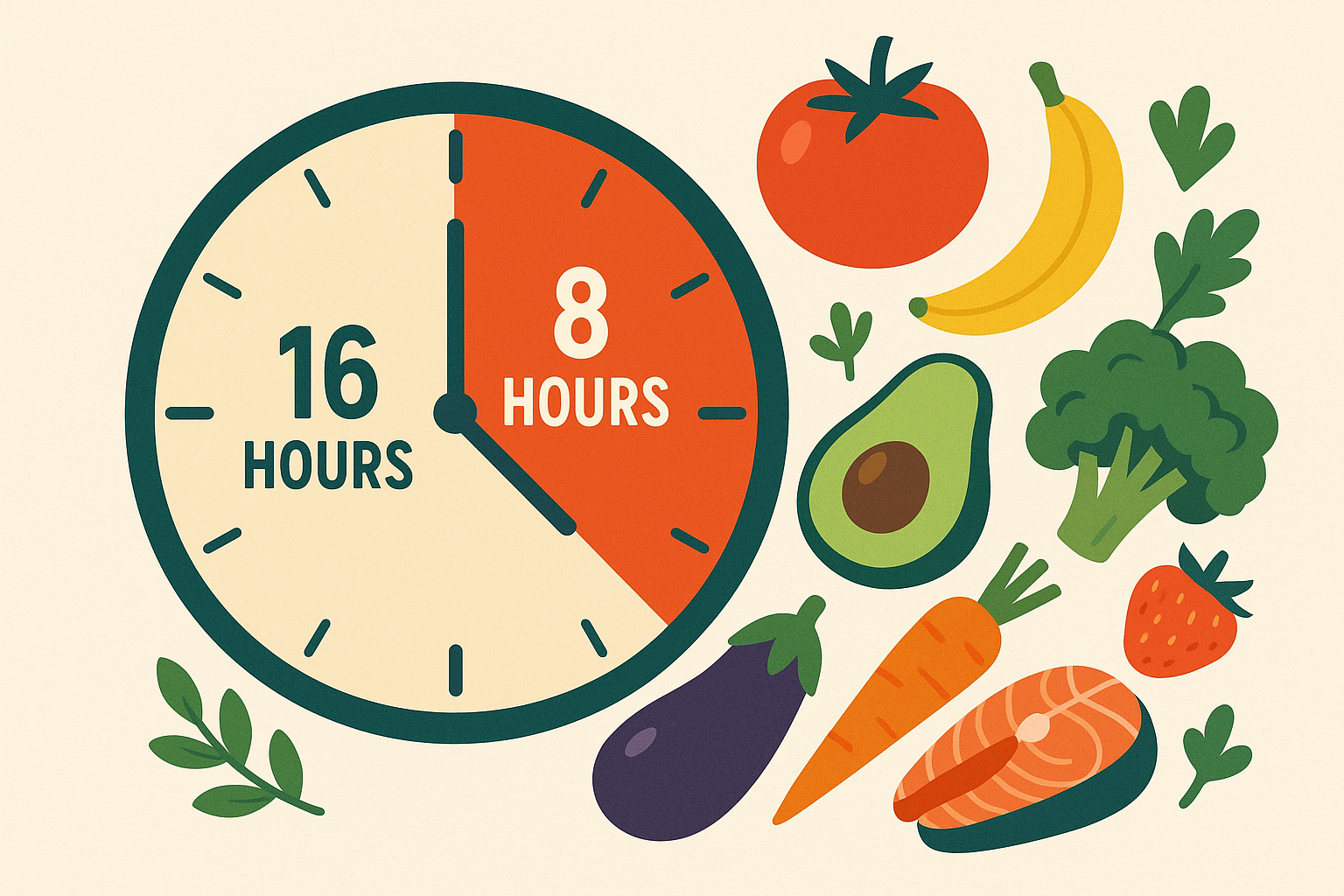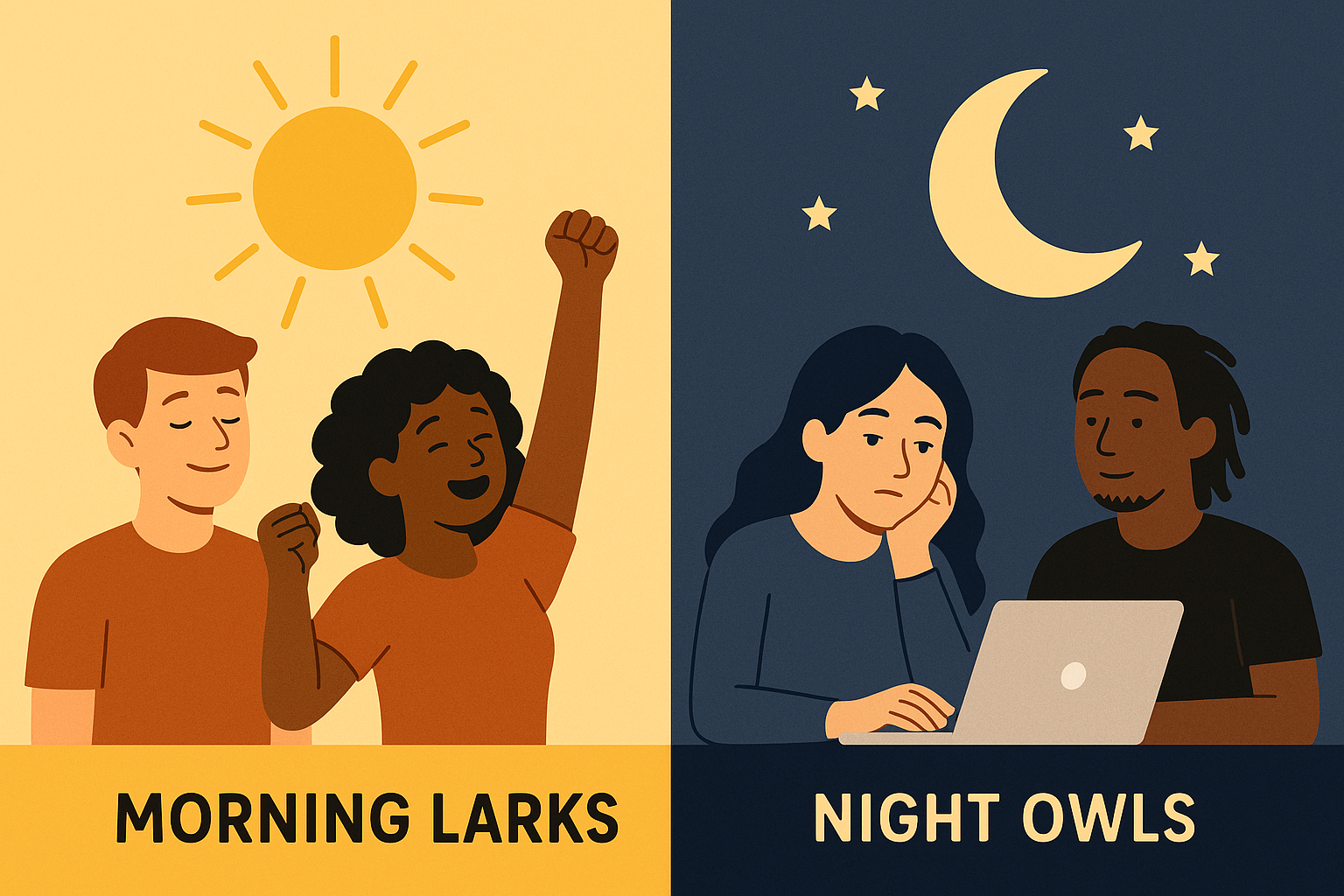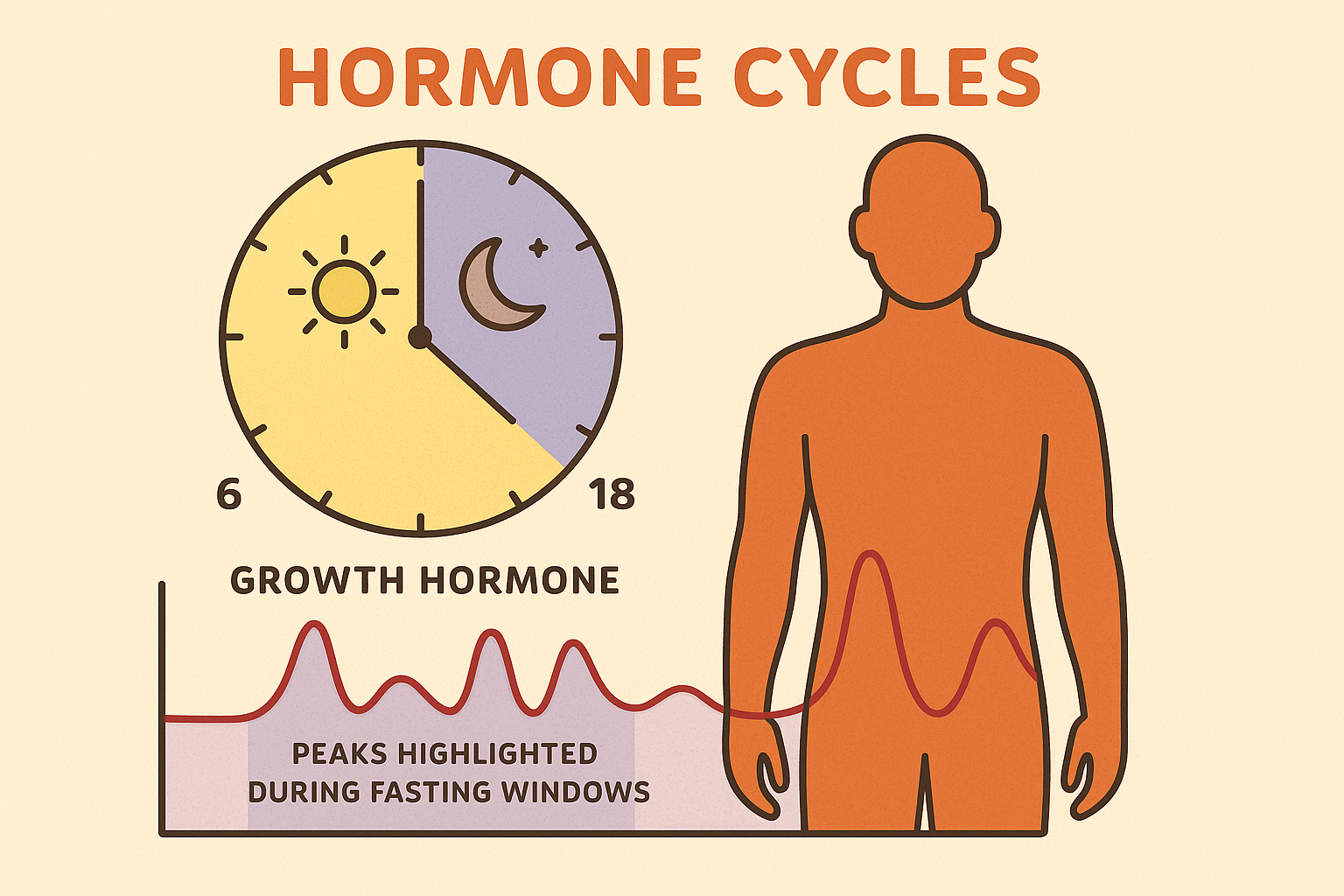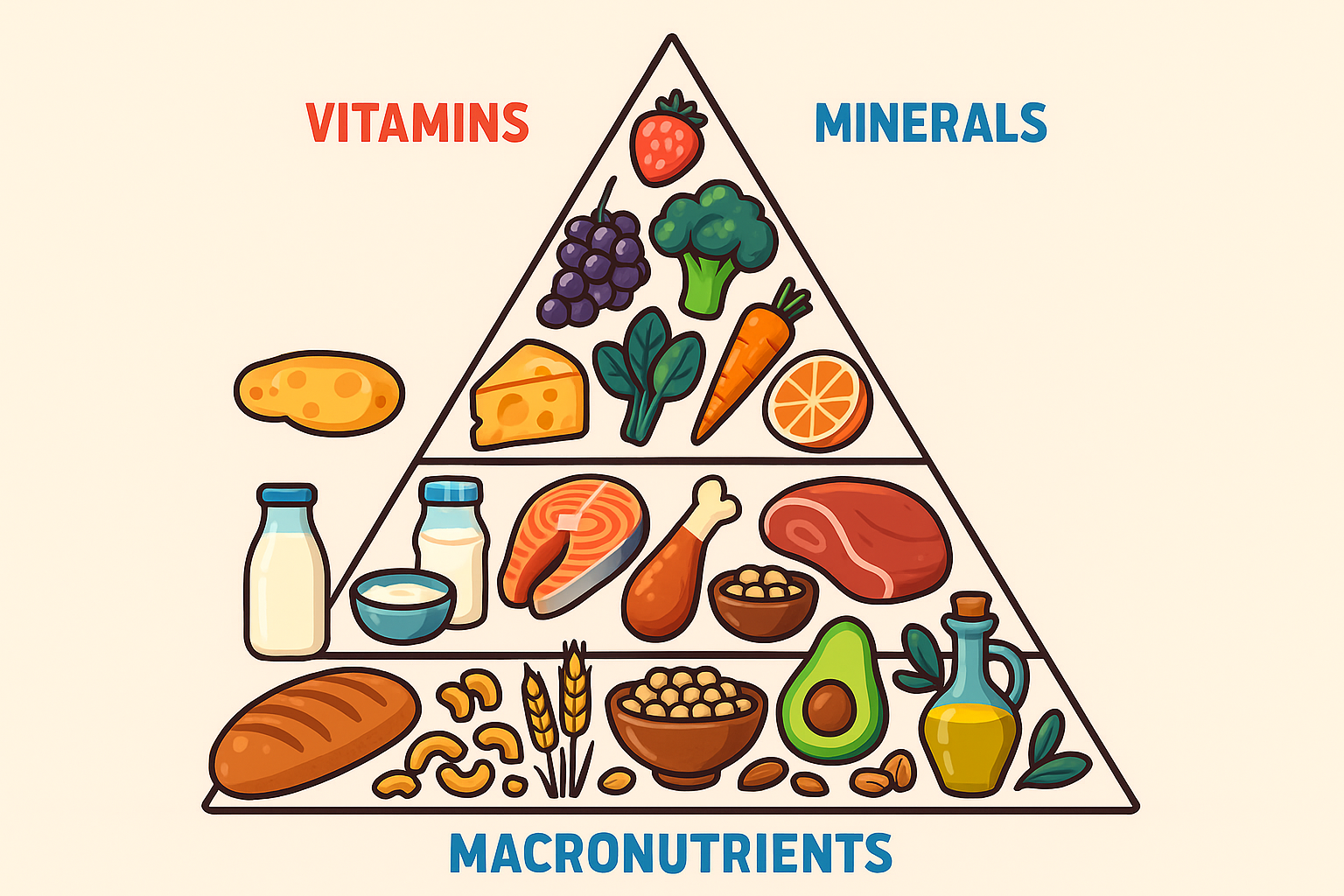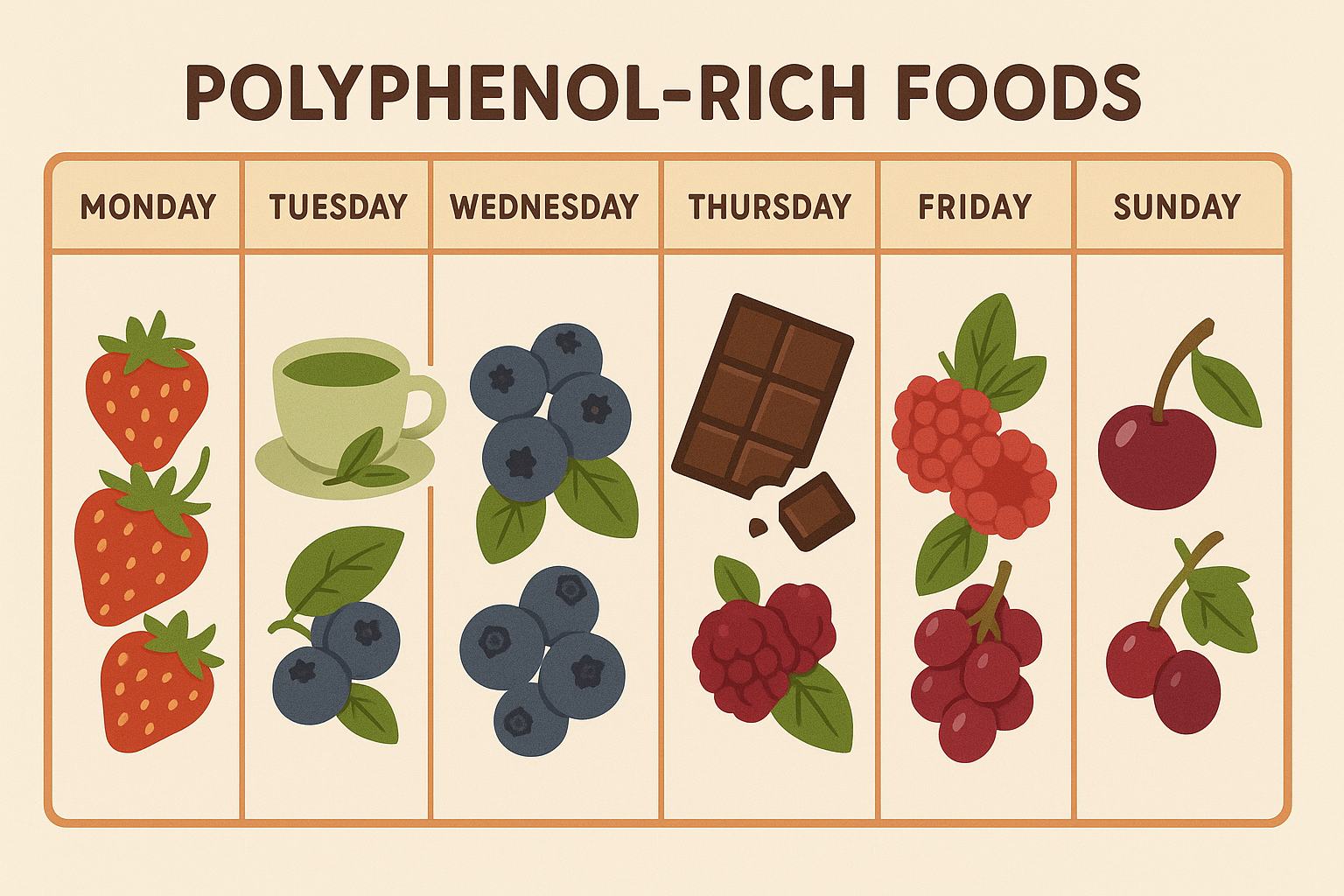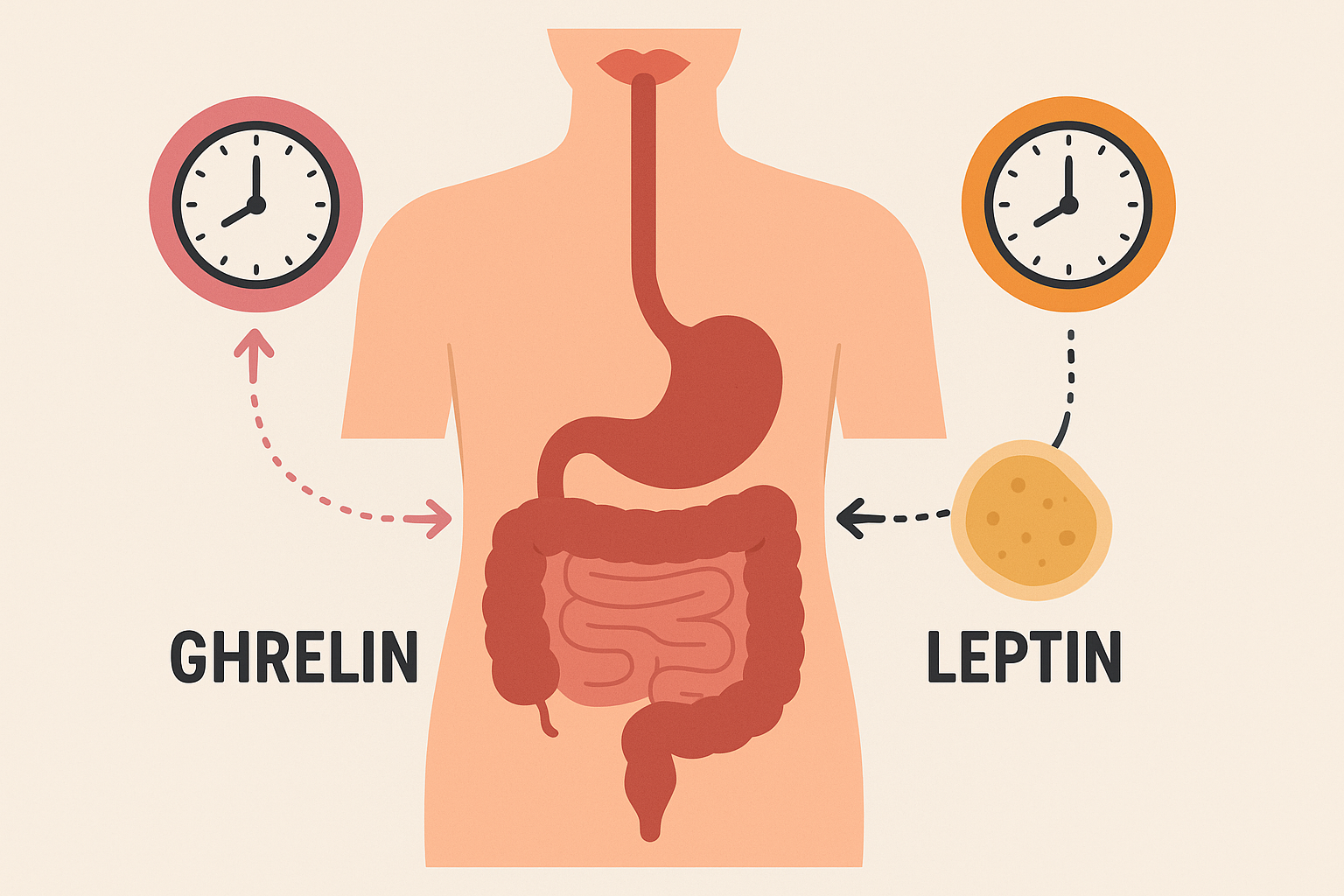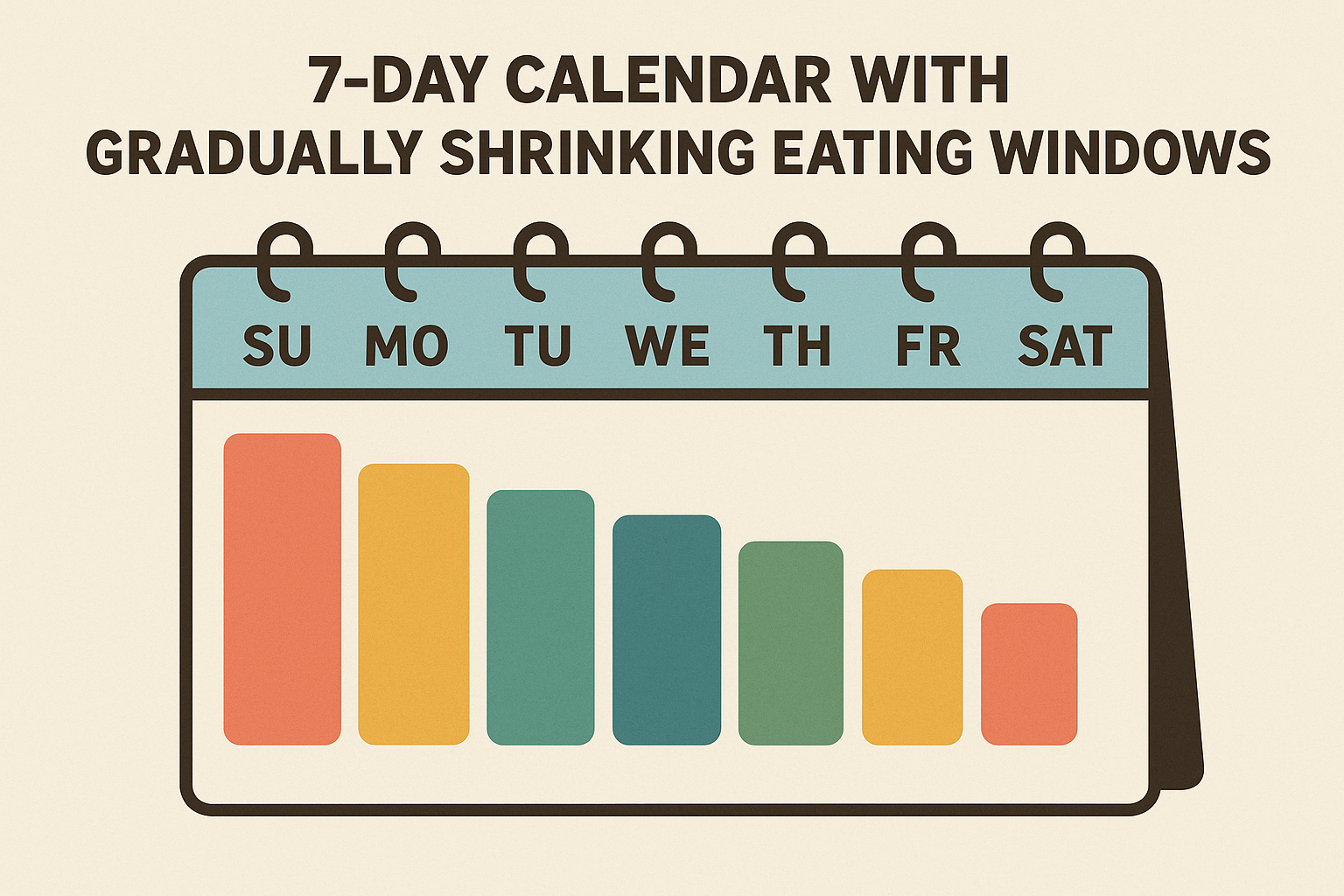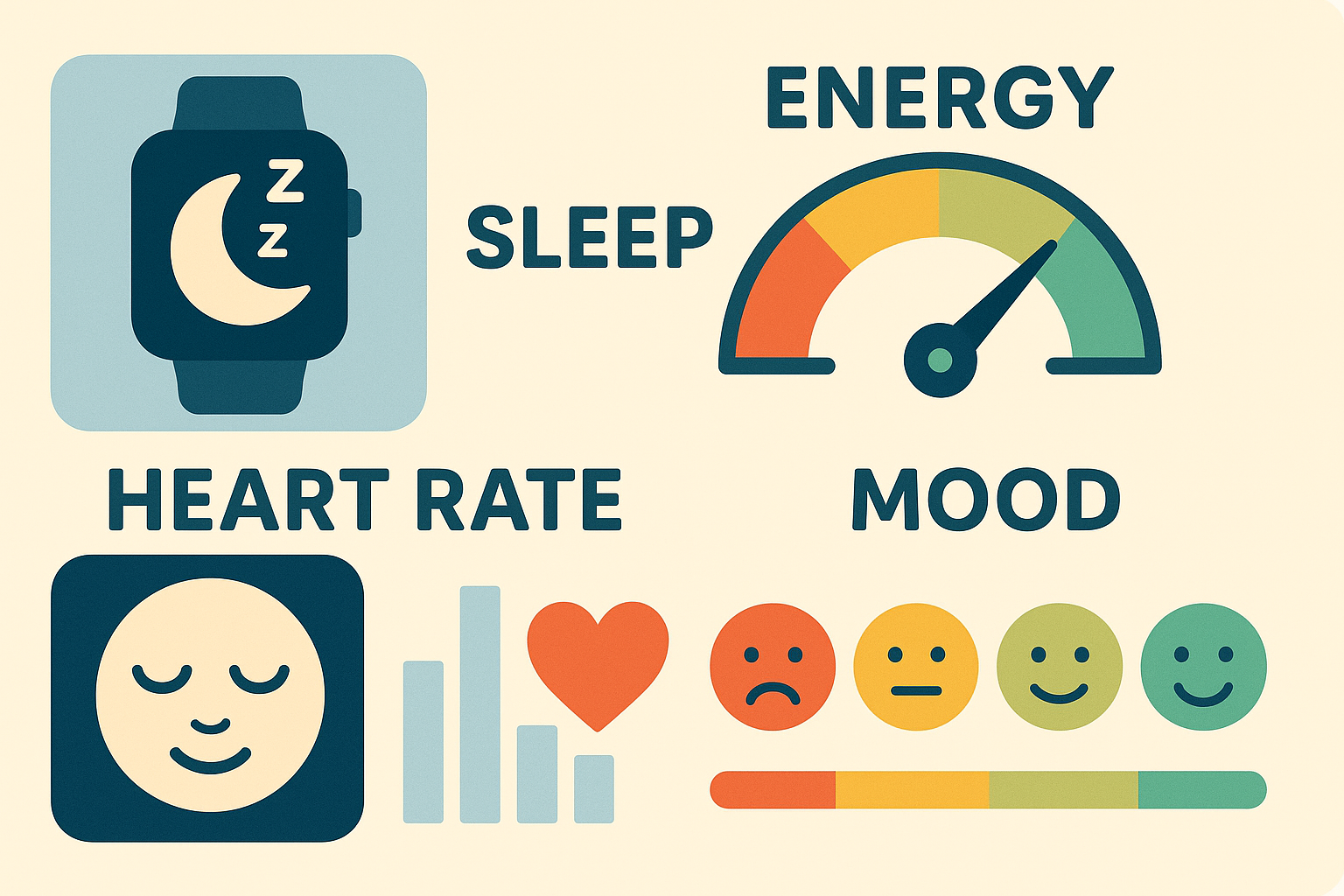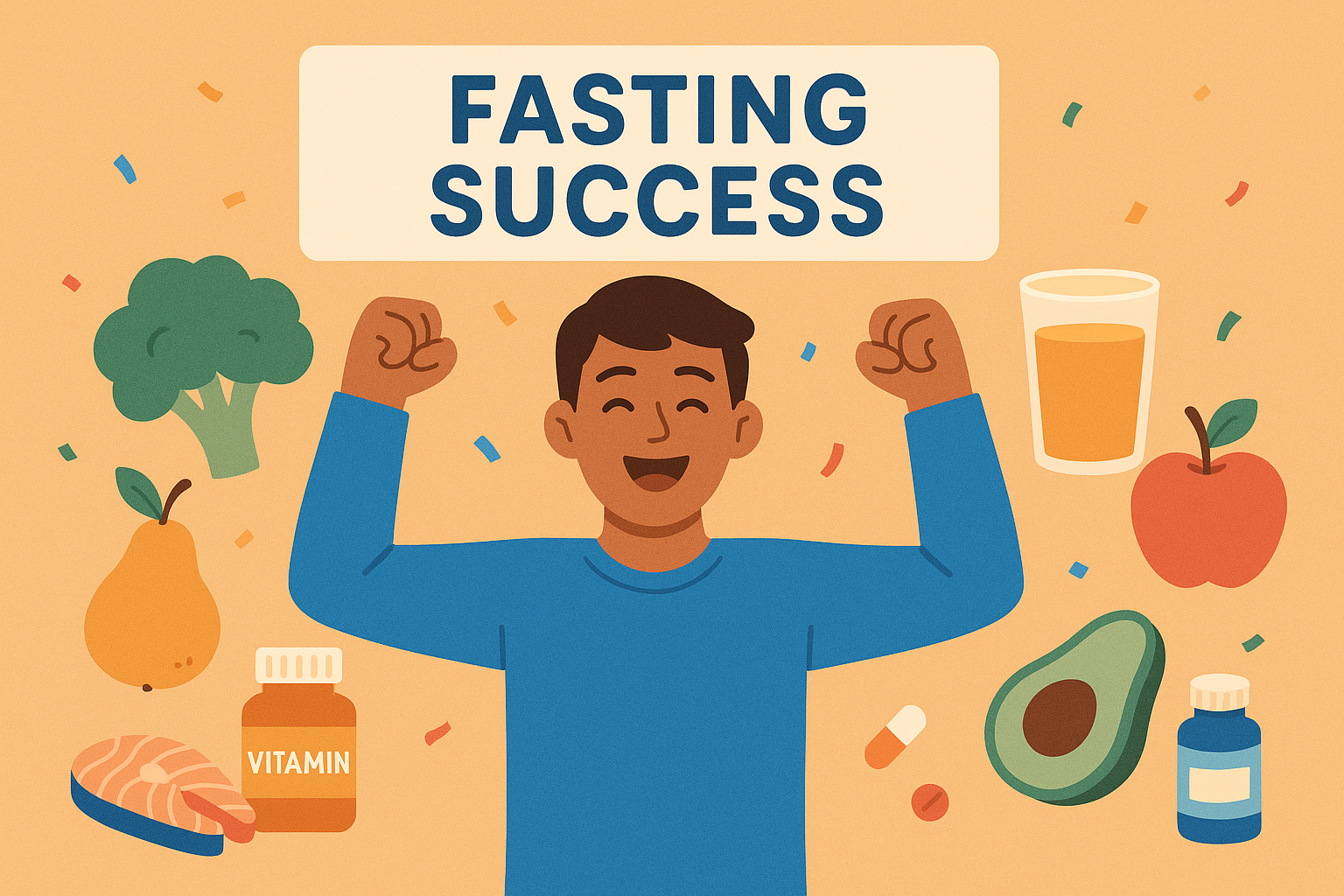16/8 Intermittent Fasting 7 Day Meal Plan: The Science-Backed Method That Actually Works With Your Body’s Natural Rhythms

I’ll be honest – I totally screwed up intermittent fasting at first. I was hangry all the time, exhausted by 3pm, and basically white-knuckling my way through each day thinking this was just how it was supposed to feel. I’d read all the generic advice about “just skip breakfast and you’ll be fine,” but nobody warned me that forcing my naturally early-rising body into a noon-to-8pm eating schedule would make me feel like I’d been hit by a truck.
The problem wasn’t with intermittent fasting itself—it was that I was fighting against my body’s natural rhythms instead of working with them. After diving deep into sleep and energy research and experimenting with different approaches (and yes, there were some pretty miserable weeks), I discovered that successful 16/8 intermittent fasting isn’t about willpower or restriction. It’s about finding what actually works for your body’s internal clock.
This guide reveals the approach I developed after my initial failures – and trust me, there were plenty. You’ll learn why your genetics determine your optimal eating window, how to get the most from your food in compressed timeframes, and most importantly, how to do this sustainably without the constant battles that derail most fasting attempts. Research shows that shooting for around 1 to 2 lbs per week is a safe bet when implementing 16/8 intermittent fasting protocols properly.
For women looking to optimize their intermittent fasting approach, understanding gender-specific metabolic differences is crucial for sustainable success.
Table of Contents
- Working With Your Body’s Natural Clock (Not Against It)
- Getting the Most From Your Food in Less Time
- The Mental Game That Nobody Talks About
- How to Actually Start Without Hating Your Life
TL;DR
- Your natural sleep-wake pattern (are you a morning person or night owl?) determines your optimal 16/8 eating window—forcing the wrong schedule will make you miserable
- Strategic food timing within your 8-hour window can boost fat burning and keep your energy steady
- Your hunger signals completely reset within 3-5 days when you eat consistently at the same times (this part is actually amazing once it happens)
- Jumping straight into 16/8 usually backfires – gradual implementation over 7 days prevents the awful crashes and builds habits that stick
- Specific food combinations help you absorb way more nutrients when you’re eating fewer meals
- You can still have a social life while fasting – it just takes a little planning
Working With Your Body’s Natural Clock (Not Against It)
Here’s the thing most people don’t realize: your body has been operating on the same internal schedule since you were born. You know that friend who’s naturally up at 5am, making coffee and ready to conquer the world? Meanwhile, you’re hitting snooze for the third time? That’s your chronotype talking, and it matters way more than you think for intermittent fasting success.
I learned this the hard way after forcing myself into a 12pm-8pm eating window despite being someone who naturally wakes up energized at 6am. My energy crashed every afternoon, I felt constantly hungry, and I eventually gave up after three weeks of pure misery. Turns out, I was basically asking my body to be hungry when it wanted food and eat when it wanted to fast. No wonder I felt terrible.
Think of your body like it has an internal clock that decides when you’re naturally hungry, sleepy, or energized. Fighting against this clock is like trying to swim upstream – exhausting and unnecessary. When you align your intermittent fasting schedule with these biological patterns instead of fighting them, the process becomes so much easier.
Recent research highlighted by “The Telegraph” reveals concerning findings about extended daily fasting, with Prof Longo noting that “16 hours or longer of daily fasting, particularly if they involve skipping breakfast, are associated with a shorter, not longer, lifespan and increased cardiovascular disease.” This is exactly why personalizing your intermittent fasting approach matters so much – what works for your coworker might be completely wrong for your body.
The key insight that changed everything for me: your body’s internal clock doesn’t care what time society says you should eat. It operates on genetic programming that determines when your metabolism runs most efficiently. When you work with this programming instead of against it, intermittent fasting stops feeling like a constant battle.
Understanding how to activate autophagy through strategic timing enhances the cellular repair benefits of your intermittent fasting protocol. When you time your meals correctly, you’re not just restricting calories—you’re optimizing your body’s natural repair mechanisms.
Finding Your Natural Eating Window
Your genes determine whether you’re naturally energized in the morning or evening, and this affects when your body best processes food. I’ve found that matching your eating window to your natural rhythm eliminates the constant hunger and energy crashes that make most people quit intermittent fasting.
Morning people do best with earlier eating windows because their bodies are primed to handle food efficiently in the morning hours. Night owls need later schedules to avoid messing with their natural sleep patterns. When you work with your type instead of against it, intermittent fasting feels natural rather than forced.
The difference is honestly dramatic. I watched my friend Sarah struggle with the popular 12pm-8pm window for months before switching to a 6am-2pm schedule that matched her natural early-rising pattern. Within two weeks, her energy stabilized and she stopped experiencing those awful afternoon crashes that had been sabotaging her progress.
| Your Natural Type | Best Eating Window | When Your Body Handles Food Best | What to Eat First |
|---|---|---|---|
| Early Bird (up before 7am feeling great) | 6am-2pm | 7am-11am | Real breakfast – eggs, oats, the works |
| Moderate Morning Person | 8am-4pm | 9am-1pm | Balanced meal with protein and carbs |
| Evening Type | 12pm-8pm | 11am-3pm | Protein and healthy fats |
| Night Owl (naturally up late) | 2pm-10pm | 1pm-5pm | Light protein-focused meal |
If You’re a Natural Morning Person (6am-2pm Eating Window)
Lucky you! If you naturally wake up before 7am feeling alert and ready to go, your body produces peak insulin sensitivity during morning hours. This means you can eat real breakfast – I’m talking eggs and toast, oatmeal with berries, the whole deal – and your body will handle it like a champ.
This timing prevents those brutal afternoon energy crashes and keeps your blood sugar stable throughout your 16-hour fast. Your stress hormone cortisol naturally peaks in the morning anyway, making this the perfect time for substantial, nutrient-dense meals. When you eat during your body’s natural high-energy period, you feel satisfied and energized rather than deprived.
Sarah, a marketing executive who naturally wakes at 5:30am, was struggling hard with the popular 12pm-8pm eating window until she made the switch. Her energy levels stabilized, she stopped experiencing those 3pm crashes where she wanted to crawl under her desk, and lost 8 pounds in her first month. Her typical day: oatmeal with berries at 6am, a substantial lunch with quinoa and grilled chicken at 11am, and a light protein-rich snack at 1:30pm before starting her fast.
The best part? Starting your eating window with perfectly prepared oatmeal provides sustained energy and fiber to support your intermittent fasting goals throughout the day. Morning people often find that their hunger completely disappears by mid-afternoon when following this schedule – your body learns to expect food during its peak hours and naturally shifts into fat-burning mode during evening and overnight.
If You’re a Night Owl (12pm-8pm or Later Eating Window)
Night owls produce melatonin later in the evening, so you need an eating schedule that doesn’t mess with your natural sleep hormone production. Eating too early can actually disrupt your internal rhythm and cause late-night stress spikes that interfere with sleep quality.
The later window allows your body to maintain its natural rhythm while still getting the metabolic benefits of extended fasting periods. I’ve noticed that night owls who force themselves into early eating windows often experience insomnia and increased stress – which actually works against their fasting goals.
The 12pm-8pm window works perfectly for most evening types because it aligns with when you naturally start feeling energized. You can have a substantial lunch when your metabolism starts ramping up, an afternoon snack during your peak processing hours, and dinner when your body is still actively handling nutrients.
What About Shift Workers?
Look, irregular work schedules don’t have to completely derail your fasting benefits. I’ve developed what I call a “floating window” approach that keeps the crucial 16-hour fast while adapting to changing shifts.
The key is staying consistent within each work rotation – your body can actually adapt to new schedules within 3-4 days if you maintain the same eating times during each shift pattern. I know nurses who successfully maintain intermittent fasting by keeping their 16-hour fast consistent even when their eating window shifts with their work schedule.
During night shifts, you might eat from 6pm-2am, then switch to 10am-6pm during day shifts. The timing changes, but that 16-hour fasting period stays the same, allowing your body to maintain the metabolic benefits while adapting to your work demands.
Timing Your Meals for Maximum Benefit
Here’s where it gets interesting: strategic meal timing within your 8-hour window can dramatically boost your body’s natural hormone production. Growth hormone, stress hormones, and insulin all follow predictable daily patterns. When you time your meals to support these cycles instead of fighting them, you enhance fat burning, muscle preservation, and energy stability.
This isn’t about being perfect – small adjustments in timing can yield big results. I’ve seen people completely transform their intermittent fasting experience simply by shifting their last meal two hours earlier or changing what they eat first.
Your hormones operate on schedules that have been fine-tuned over millions of years. When you work with these natural rhythms instead of against them, your body responds with better energy, improved sleep, and more efficient fat burning.
The most powerful thing about this approach is that it compounds over time. Each day that you eat in alignment with your natural hormone production, your body becomes more efficient at using nutrients and burning fat during fasting periods.
Maximizing Growth Hormone While You Sleep
Growth hormone release peaks during the first 2-3 hours of fasting, but only if your last meal was finished 3-4 hours before your fasting period begins. I learned this the hard way when I ate dinner at 9pm and then laid in bed feeling like I’d swallowed a bowling ball. My fitness tracker showed I got about 2 hours of deep sleep that night. Not fun.
Late meals suppress this crucial hormone release and reduce fasting benefits. When you eat too close to bedtime, your body spends energy digesting food instead of producing the growth hormone that repairs tissues and burns fat while you sleep.
The difference in how I feel the next morning when I finish eating by 6pm versus 8pm is honestly remarkable. Early meal completion leads to deeper sleep, more vivid dreams, and way more energy upon waking – all signs that growth hormone production was optimized overnight.
Keeping Your Energy Steady All Day
Breaking your fast with protein and healthy fats instead of sugary stuff helps maintain steady energy throughout the day. I used to think people who avoided carbs in the morning were just being dramatic, but it turns out starting with sugary foods or refined carbs causes energy spikes that lead to afternoon crashes and increased cravings.
A protein-rich first meal supports steady energy and prevents the hormonal rollercoaster that makes intermittent fasting feel like torture. When your energy levels are stable, you experience consistent focus and natural appetite control throughout your eating window.
I start every eating window with eggs or Greek yogurt paired with nuts or avocado. This combination provides the building blocks for steady energy while giving my body what it needs for the upcoming fast. No more 3pm energy crashes where I’m eyeing the office vending machine.
Training Your Body to Burn Fat Efficiently
Your body’s ability to efficiently switch between burning sugar and fat determines how comfortable you feel during fasting periods. Most people struggle because they’re what I call “metabolically inflexible” – their bodies panic when glucose runs low and they haven’t trained their fat-burning systems.
Specific strategies can train your metabolism to smoothly transition into fat-burning mode, making intermittent fasting feel natural rather than like a constant battle. This flexibility is what separates people who thrive with fasting from those who white-knuckle their way through it.
The training process takes time, but the results are so worth it. Once your body becomes efficient at burning fat for fuel, you’ll experience stable energy throughout your fasting window and way fewer cravings during your eating periods.
I think of this as teaching your body to be bilingual – fluent in both sugar and fat burning. The more practice your metabolism gets switching between these fuel sources, the smoother and more comfortable the process becomes.
Speeding Up Fat Adaptation
Strategic MCT oil consumption at the beginning of your eating window can significantly speed up your body’s ability to use fat for fuel during fasting periods. I add one tablespoon of MCT oil to my first meal, which provides readily available fuel that trains my metabolism to efficiently use fat.
This technique can reduce the adaptation period from weeks to days for most people. MCT oil bypasses normal fat digestion and goes straight to your liver, where it’s converted to ketones that your brain and muscles can use immediately.
The key is consistency – using MCT oil daily during your adaptation period teaches your body to expect and efficiently utilize this type of fuel. After two weeks of this approach, most people notice dramatically reduced hunger during fasting periods and more stable energy throughout the day.
Getting the Most From Your Food in Less Time
Let’s be real – cramming all your daily nutrition into 8 hours requires some actual strategy. I discovered that most people don’t fail at intermittent fasting because of hunger – they fail because they’re not getting the nutrients their bodies need, which leaves them feeling tired and craving junk food.
This approach focuses on maximizing what your body actually absorbs from food and supporting the detox processes that become active during fasting periods. When your body gets everything it needs nutritionally during your eating window, the fasting period becomes a time of repair rather than stress.
According to research from Berry Street, 95% of patients pay $0 out of pocket when they see a dietitian, making professional nutritional guidance accessible for optimizing your compressed eating windows. This support can be invaluable when you’re learning to maximize nutrition in fewer meals.
The biggest mistake I see people make is treating their eating window as an opportunity to eat whatever they want. Look, intermittent fasting does provide some metabolic flexibility, but your body still needs high-quality nutrients to function well during both fed and fasted states.
I’ve developed specific strategies for ensuring every meal during your eating window actually contributes to your health goals. This isn’t about restriction – it’s about making every bite count when you have fewer opportunities to nourish your body.
Food Combinations That Actually Work
Here’s something most people don’t know: certain nutrients compete for absorption while others enhance each other’s uptake. When you’re eating fewer meals, every bite needs to count nutritionally. I’ve learned specific food combinations that can triple nutrient absorption rates, ensuring your compressed eating window delivers way better nutrition than traditional eating patterns.
The science of how nutrients interact is honestly fascinating and super practical. Understanding which foods work together allows you to get more nutrition from the same amount of food – crucial when you’re working within a compressed timeframe.
I spend time planning my meals around these interactions rather than just focusing on calories or macros. The result is better energy, improved recovery, and fewer cravings during fasting periods because my body is actually getting everything it needs.
Getting the Most Iron From Your Food
Iron absorption can increase by up to 300% when paired correctly with vitamin C sources, but calcium-rich foods consumed at the same time can completely block this process. I learned to pair my iron-rich spinach salads with bell peppers and strawberries while saving dairy for separate meals.
This strategic separation ensures optimal mineral uptake when you’re eating less frequently. Instead of throwing together a spinach salad with cheese and orange slices, I eat my iron-rich spinach with vitamin C-packed bell peppers at lunch, then enjoy Greek yogurt with almonds as an afternoon snack.
This separation made a noticeable difference in my energy levels within two weeks, confirmed by improved iron levels on my blood work. No more afternoon fatigue or brain fog that I had been blaming on the fasting itself.
Maximizing Fat-Soluble Vitamins
Vitamins A, D, E, and K need dietary fat to be absorbed properly, and these nutrients support the cellular repair processes that happen during fasting. I include healthy fats with every meal to ensure these crucial vitamins actually reach my cells. Without adequate fat intake, you miss out on the anti-aging benefits that make intermittent fasting worthwhile.
A simple drizzle of olive oil on vegetables or a handful of nuts with fruit ensures these vitamins get absorbed. I’ve noticed that people who avoid fats during their eating windows often experience dry skin, poor wound healing, and brain fog – all signs they’re not absorbing these important vitamins.
Foods That Support Your Body’s Natural Cleanup Process
Your body’s cellular cleanup process – what scientists call autophagy – becomes highly active during extended fasting periods. Specific foods and compounds can enhance this anti-aging mechanism, but most people don’t know which nutrients actually support cellular repair.
I’ve identified key foods that maximize the longevity benefits of intermittent fasting while providing essential nutrition during eating windows. These foods don’t just fill you up – they actively support the repair processes that make fasting so powerful for health and longevity.
The goal is to eat foods that enhance your body’s natural cleanup rather than interfere with it. Certain compounds can actually boost these processes, amplifying the benefits you get from your fasting periods.
Rotating Different Antioxidant-Rich Foods
Different antioxidant-rich foods activate various cellular repair pathways, preventing your body from adapting to any single compound. I rotate between green tea on Monday, blueberries on Tuesday, dark chocolate on Wednesday, and so on throughout the week.
This rotation ensures continuous cellular repair activation while keeping meals interesting and varied. Your body doesn’t get used to any single antioxidant source, maintaining the benefits throughout your intermittent fasting journey.
The variety also prevents boredom and ensures you’re getting a wide range of protective compounds. Each source offers unique benefits, from the catechins in green tea to the anthocyanins in berries.
Supporting Your Body’s Natural Detox
Cruciferous vegetables and garlic family foods support your body’s master antioxidant production – which becomes increasingly important during fasting periods. These compounds help your liver process the cellular waste that gets released during the cleanup process.
Incorporating sulforaphane-rich broccoli during your eating window supports detox pathways activated by intermittent fasting. I make sure to include at least one serving of cruciferous vegetables daily to support these natural processes.
These compounds also support healthy inflammation responses and provide the raw materials your body needs for cellular repair during fasting periods.
Strategic Protein Timing
Complete proteins consumed early in your eating window support muscle maintenance while providing building blocks for brain chemicals during the upcoming fast. I prioritize high-quality proteins in my first meal to ensure my body has what it needs for repair and brain function during the fasting period.
Eggs, fish, and quinoa provide all essential amino acids in optimal ratios. These complete proteins give your body everything it needs to maintain muscle mass and produce important brain chemicals during extended fasting periods.
Starting with high-quality protein also helps stabilize blood sugar and provides lasting satisfaction that makes the rest of your eating window easier to manage.
| Meal Timing | Best Protein Sources | Why It Works | How It Helps Your Fast |
|---|---|---|---|
| First Meal | Eggs + Quinoa | Complete amino acid profiles | Sustained energy, muscle preservation |
| Mid-Window | Greek Yogurt | Complete protein + probiotics | Lasting fullness, gut health |
| Final Meal | Salmon + Lentils | Complete + complementary proteins | Overnight repair, hormone support |
| Snack Option | Almonds + Hemp Seeds | Combined completeness | Healthy fats, sustained energy |
The Mental Game That Nobody Talks About
Here’s what nobody tells you about intermittent fasting: the mental aspect often determines success way more than the physical stuff. I’ve seen people with perfect meal timing fail because they didn’t address the psychological challenges of compressed eating windows.
This section tackles retraining your hunger signals, navigating social situations, and managing stress – the overlooked elements that make or break long-term success. Most intermittent fasting advice focuses on what to eat and when, but completely ignores the mental strategies that determine whether you’ll actually stick with it.
A recent military study published by “Army.mil” found that psychological factors often derail intermittent fasting success, with one participant noting how “anytime we aren’t finding enjoyment in our food, that makes it more difficult to stick with” the protocol. This emphasizes how important it is to maintain a positive relationship with food during fasting.
I’ve learned that willpower is a limited resource, and successful intermittent fasting requires strategies that don’t rely on constantly fighting yourself. When you address the psychological aspects properly, fasting becomes a natural part of your routine rather than a daily battle.
Managing stress effectively is crucial for intermittent fasting success, as where your body stores tension can reveal emotional patterns that impact eating behaviors during compressed feeding windows.
Retraining Your Hunger Signals
Your hunger and fullness signals can be completely reprogrammed within days, but most people give up before this amazing adaptation occurs. Understanding the science behind your primary hunger hormones transforms intermittent fasting from a willpower battle into a physiological reset.
Once these signals align with your new eating pattern, hunger outside your window virtually disappears. The key is consistency during the initial adaptation period when your hormones are learning your new schedule.
I experienced this transformation firsthand. During my first week of intermittent fasting, I felt hungry every few hours regardless of my eating window. By week two, my hunger signals had completely shifted to match my new schedule. It was honestly kind of magical.
How Your Hunger Hormone Learns Your New Schedule
Your primary hunger hormone operates on a learned schedule based on when you typically eat. I discovered that eating at exactly the same times each day retrains this hormone within 3-5 days, eliminating those random hunger pangs outside your eating window.
Consistency in timing matters way more than perfect food choices during this adaptation period. Your body learns to expect food at specific times and stops producing hunger signals outside those windows.
The reset process requires patience, but the results are honestly remarkable. After one week of consistent timing, most people find their appetite naturally aligns with their chosen eating window.
Helping Your Body Recognize When It’s Actually Full
Your fullness hormone tells your brain when you’re satisfied, but many people have developed resistance to this signal from years of processed food consumption. Strategic meal composition – emphasizing protein, fiber, and healthy fats – can restore this sensitivity within weeks.
When this hormone functions properly, you feel genuinely satisfied with less food, making the 8-hour eating window feel natural rather than restrictive. Processed foods and sugar mess with this signaling, which is why focusing on whole foods during your eating window is so important.
I noticed improved fullness signals within three weeks of cleaning up my food choices during my eating window. Meals that previously left me wanting more suddenly felt completely satisfying.
Social Navigation Without Becoming a Hermit
Social situations can derail even the most committed faster, but completely avoiding them leads to isolation and eventual abandonment of your protocol. I’ve developed practical strategies for maintaining your 16/8 schedule while still participating in family meals, work events, and social gatherings.
The key is flexibility within structure – maintaining your fasting benefits while preserving relationships. Social eating is deeply ingrained in human culture, and fighting against it entirely usually backfires.
I’ve learned to be proactive about social situations rather than reactive. Planning ahead prevents awkward moments and helps maintain your intermittent fasting schedule without sacrificing important relationships.
Your Social Situation Survival Guide:
- Plan eating window shifts 24 hours ahead for special events
- Have 2-3 brief explanations ready for your eating schedule
- Suggest non-food social activities (coffee walks, morning workouts)
- Practice polite ways to decline off-window food offers
- Schedule makeup fasting time when windows get disrupted
- Keep conversations focused on people, not food choices
- Bring fasting-friendly options to potluck events
Flexible Window Shifting
Temporarily shifting your eating window by 1-2 hours for special occasions allows social participation while maintaining that crucial 16-hour fast. I might move my usual 12pm-8pm window to 2pm-10pm for a dinner party, then return to my regular schedule the next day.
This flexibility prevents the all-or-nothing mentality that destroys long-term success. Rigid adherence to timing often leads to social isolation, which ultimately undermines your health goals more than occasional schedule adjustments.
The key is returning to your regular schedule immediately after the event rather than using it as an excuse to abandon your routine entirely.
What to Actually Say to People
Having confident, brief explanations ready prevents awkward conversations and reduces social pressure around your eating pattern. I simply say, “I eat between noon and 8pm – it helps me feel more energized” rather than launching into lengthy justifications about intermittent fasting.
Most people accept this explanation without further questions or judgment. When my coworker invited me for breakfast at 9am, I responded with “I’d love to catch up! How about we meet for coffee instead? I typically eat later in the day and feel more energetic that way.”
She suggested we grab coffee and walk through the nearby park, which became our weekly tradition and actually strengthened our friendship without compromising my fasting schedule.
How to Actually Start Without Hating Your Life
Jumping directly into 16/8 fasting often triggers what I call “metabolic shock” and psychological resistance that leads to failure. I learned this through my own crashed-and-burned attempts and now recommend a gradual approach that allows your metabolism, hormones, and mindset to adapt progressively.
This systematic approach builds sustainable habits while minimizing the discomfort that causes most people to quit. Your body needs time to adjust to new eating patterns, and rushing this process creates unnecessary stress that usually backfires.
Research from Zero Longevity shows that proper meal timing plays a pivotal role, with the body adapting to new schedules within 3-4 days when maintaining consistent eating times during each adjustment phase.
I’ve seen too many people try to go from eating every few hours to a strict 16/8 schedule overnight. This approach almost always fails because it doesn’t respect your body’s need for gradual adaptation. It’s like trying to run a marathon when you’ve been sitting on the couch for months.
The progressive system I’ve developed respects your physiology while building the habits necessary for long-term success. Each phase prepares your body for the next level of fasting duration without the misery.
Your 7-Day Step-by-Step Plan
Your body needs time to adjust hormone production, enzyme release, and cellular metabolism to new eating patterns. Rushing this process creates unnecessary stress and often backfires with intense cravings and energy crashes that make you want to quit.
This gradual approach respects your body’s adaptation timeline while building the habits necessary for long-term success. Each phase serves a specific purpose in preparing your metabolism for the next level of fasting.
The beauty of this system is that each step feels totally manageable. You’re never asking your body to make dramatic changes that trigger stress responses and sabotage your progress.
Your 7-Day Getting Started Checklist:
- Days 1-2: Start with 12-hour eating window (8am-8pm)
- Monitor energy levels every 2 hours using 1-10 scale
- Days 3-4: Extend to 14-hour fast (delay breakfast 1 hour)
- Track hunger patterns and mood changes
- Days 5-7: Achieve full 16/8 protocol
- Assess sleep quality and digestive comfort
- Fine-tune eating window timing based on how you feel
Days 1-2: The Easy Start (12-Hour Foundation)
Starting with a 12-hour eating window establishes the habit of defined eating periods without any significant stress on your system. I recommend eating between 8am-8pm or 7am-7pm, depending on your natural schedule.
This gentle introduction helps your digestive system adapt to having clear start and stop times without the challenge of extended fasting periods. Most people find this phase surprisingly easy, which builds confidence for the next steps.
The 12-hour foundation also helps you identify your natural hunger patterns and preferred meal timing before adding the complexity of longer fasts. You’re basically just cutting out late-night snacking and early morning eating – not too scary.
Days 3-4: The Gentle Push (14-Hour Progression)
Extending to a 14-hour fast typically involves delaying breakfast by one hour, allowing your body to experience mild fat-burning without overwhelming stress. Most people find this transition surprisingly manageable after establishing the 12-hour foundation.
Your metabolism begins shifting toward fat burning during these longer fasting periods. This is where you start experiencing some of the metabolic benefits of intermittent fasting while still maintaining a comfortable pace.
Some people notice improved mental clarity during this phase as their bodies begin producing ketones more efficiently. Don’t worry if you don’t feel this yet – everyone adapts at their own pace.
Days 5-7: The Full Deal (Complete 16/8 Implementation)
Completing the transition to 16/8 should feel natural after the progressive buildup. I monitor energy levels and hunger patterns during this phase to fine-tune optimal eating window timing for each person.
Some people need an extra day or two at the 14-hour stage – listen to your body rather than forcing a rigid timeline. The goal is sustainable implementation, not speed. There’s no prize for rushing this process.
By this point, your hunger hormones should be adapting to the new schedule, making the full 16-hour fast feel manageable rather than torturous.
How to Know If It’s Working
Your body provides clear feedback about whether your current fasting approach supports or stresses your system. I’ve identified specific signs and subjective measures that indicate when adjustments are needed.
Tracking these indicators prevents you from pushing through approaches that aren’t serving your unique physiology. Your body is constantly communicating with you – learning to interpret these signals is crucial for long-term success.
The key is paying attention to patterns rather than day-to-day fluctuations. One bad day doesn’t mean your protocol isn’t working, but consistent negative patterns indicate the need for adjustments.
Tracking Your Energy Patterns
Monitoring energy levels every 2 hours throughout the day reveals whether your eating window timing aligns with your natural rhythms. I use a simple 1-10 scale in my phone notes to identify patterns over time.
Consistent afternoon crashes or morning sluggishness indicate your window timing needs adjustment. Your energy should feel stable and sustained when your eating schedule matches your biology.
After two weeks of tracking, clear patterns emerge that guide optimal timing adjustments for your individual type and lifestyle. This data is way more valuable than any generic advice you’ll find online.
Sleep Quality Assessment
Changes in sleep quality, particularly deep sleep, provide crucial feedback about your fasting protocol’s impact on recovery processes. I track sleep using a wearable device and notice that eating too close to bedtime significantly reduces deep sleep quality.
Your sleep data often reveals timing issues before you consciously notice them. Poor sleep quality during intermittent fasting usually indicates meal timing problems rather than fasting being wrong for you.
Quality sleep is essential for the hormonal benefits of intermittent fasting, so this metric deserves careful attention during your implementation phase.
Mood Stability Check-ins
Monitoring mood fluctuations, especially irritability or anxiety during fasting periods, helps determine if your current protocol supports or stresses your nervous system. Persistent mood issues during fasting often indicate inadequate nutrition during eating windows or timing misalignment.
Your emotional state is a reliable indicator of metabolic health. When intermittent fasting is working properly, most people experience improved mood stability and mental clarity.
Tracking mood alongside energy and sleep provides a complete picture of how well your current approach serves your overall wellbeing.
When you’re ready to enhance your fasting journey with high-quality supplements that support nutrient absorption and cellular health, Organic Authority offers carefully vetted products that align with this science-based approach. Their plant-based supplements and marine collagen can help fill nutritional gaps during compressed eating windows while supporting the detoxification processes activated during fasting.
Supporting your intermittent fasting protocol with marine collagen peptides can enhance muscle preservation and skin health during extended fasting periods.
Final Thoughts
Look, successful 16/8 intermittent fasting isn’t about forcing your body into submission or proving how much willpower you have. It’s about working with your natural biology to create sustainable health improvements that actually stick. I’ve learned that the difference between people who thrive with fasting and those who struggle comes down to personalization and taking the time to do it right.
Your natural sleep-wake pattern, hormone cycles, and lifestyle all influence your optimal approach, and respecting these individual factors makes the difference between short-term restriction and long-term transformation. The approach I’ve outlined here addresses the gaps in traditional fasting advice by considering your whole person – not just your eating schedule.
When you align your fasting window with your body’s natural rhythms, maximize nutrition during eating periods, and build psychological resilience through smart implementation, intermittent fasting becomes a powerful tool for health rather than another diet to endure. The science supports this personalized approach, and my experience confirms that working with your body’s natural patterns creates lasting results.
The journey requires patience and self-awareness, but the rewards extend way beyond weight management. Improved energy, better sleep, enhanced mental clarity, and optimized cellular repair are all within reach when you implement intermittent fasting correctly. Your body has incredible wisdom – learning to listen to it and work with it makes all the difference in your success.
Some weeks you’ll feel like a fasting superhero. Other weeks, you’ll question everything and consider going back to eating Pop-Tarts for breakfast. Both are normal parts of the process. The key is remembering that this isn’t about perfection – it’s about finding a sustainable approach that enhances your life rather than making it more stressful.

